#datsun stanza
Text

CRAZY CAR ART 0222 ”STANZA PA10 (VIOLET)”
We sell merchandise of this drawing.
Check out the web shops from this URL.
https://ozizo-z.wixsite.com/ozizo/shop
For drawing inquiries, please send me message.
絵のご依頼はメッセージにてお気軽にお問い合わせください。
original cartoon ”mame mame rock” / (c)ozizo
#datsun stanza#pa10 stanza#datsun 160j#nissan violet#pa10 violet#japanesecar#custom culture#classiccar#automotive art#car art#cartoon#illustration#artwork#mame mame rock#ozizo#オジゾー#Crazy Car Art
106 notes
·
View notes
Video
youtube
59,000 บาท 🔥 Datsun stanza PA-10 🔥 รถมือสองราคาถูก รถแนวเรโทรคลาสิคเก็บ...
0 notes
Text
Some old Nissans / Datsuns from the Japan Car Day. B210 Sunny /Datsun 120Y, 610 Bluebird / Datsun 180B, 510 Bluebird / Datsun 1600, S30 Fairlady / Datsun 240Z and a 710 Violet / Stanza




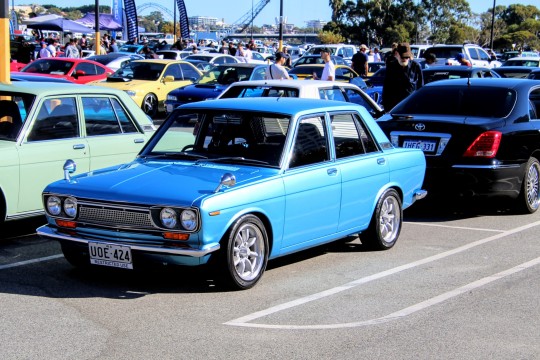
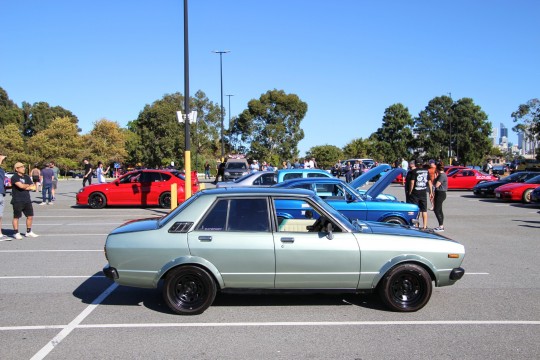


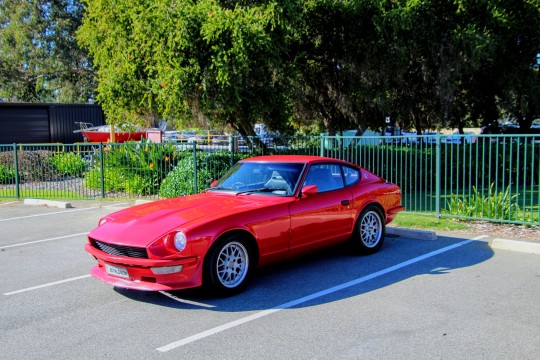

12 notes
·
View notes
Photo

Datsun Stanza SSS, 1981. A version of the T10 series rear wheel drive Stanza that was made in Australian, despite the “sporty” appearance the SSS was powered by an 80hp 1.6 litre engine
#Datsun#Datsun Stanza SSS#Datsun Stanza#Nissan Stanza T10#rear wheel drive#sports saloon#Australian market
79 notes
·
View notes
Photo

pineappletomboyy🍍💦
2 notes
·
View notes
Text

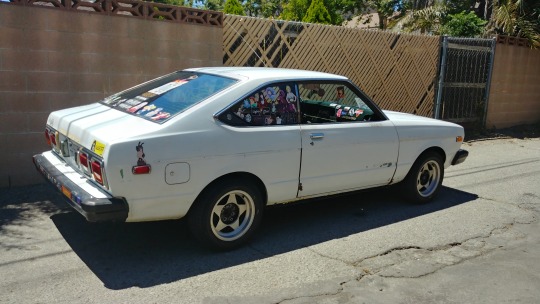
My Dutsy 😌
#datsun#nissan#1978#jccs#l20b#classic car#vintage#nissan violet#datsun a10#datsun 510#s130#s30#240z#260z#280z#280zx#nissan stanza#240sx#180sx#silvia#s13#s14#s15
47 notes
·
View notes
Photo

Nissan Motor Co, 1983
96 notes
·
View notes
Text
When most people think of Spring, they think of warmer weather and new life.
For the HSRCA, Springtime is race time. All kinds of historic cars attend and compete in a relaxed racing event. I see it as a scaled down version of the Goodwood Revival.
Held at Wakefield Park, the 2018 Spring Festival brought in some beautiful vintage racers.
It’s Group N that I normally love to watch but this time the Super Sprints group had a lot of cars to look out for.
Garry Ford was driving his Mk 1 Ford Escort. It’s an absolute weapon with its 302 Windsor donk and not much weight holding it back.
This little 13B Anglia had the front wheel lifting over at turn 4 with ease.
Barry Bray’s S12 Nissan Gazelle was a stunner on the track sporting the lightening livery from the Super Silhouette era of the ’80s.
An Austin A30 with 1990cc under the hood was exchanging places with the S12 all day keeping things interesting.
In Group R was Peter Turner in his Norax C1 Prototype powered by a 12A peripheral ported rotary.
After a few sessions, the pit garages become just as busy as the track with repairs being made all around. It truly is a cycle of race, break, fix repeat.
As always, HSRCA events are a ton of fun to watch. I only wish to get involved in the racing one day.
Such beautiful lines.
Group N will always be my favourite with it’s David and Goliath battles.
Many thanks for looking.
Words & Photos by Domenic Ciccio
Instagram: @motorvated
Facebook: @mtrvtd
Get your favourite image as an A3 poster from Motorvated On The Wall!
HSRCA Spring Festival 2018 When most people think of Spring, they think of warmer weather and new life. For the HSRCA, Springtime is race time.
#datsun#Falcon#Ford#Gazelle#Holden#HSRCA#Mustang#nissan#Porsche#Spring Festival#Stanza#Torana#Vintage Racing#Wakefield
1 note
·
View note
Photo
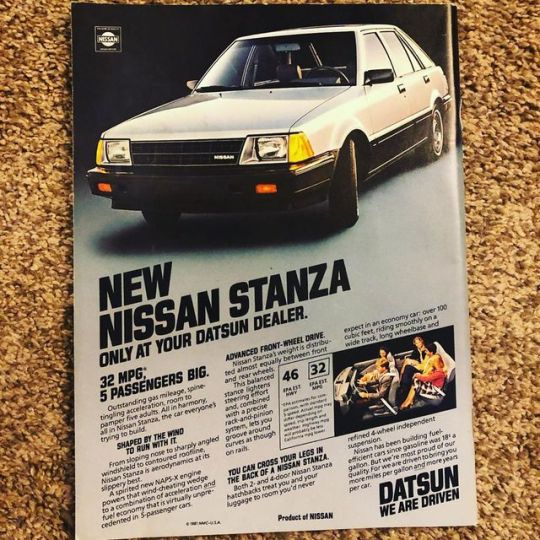
1982 vintage Datsun ad #datsun #stanza #nissan #vintageadvertising #vintagecars #vintagecarsdaily #80s #80saesthetic #80scars #nissanstanza #oldadvertising (at Lake California, California) https://www.instagram.com/p/Bwh1ruEgSvO/?utm_source=ig_tumblr_share&igshid=171fk58h72l2e
#datsun#stanza#nissan#vintageadvertising#vintagecars#vintagecarsdaily#80s#80saesthetic#80scars#nissanstanza#oldadvertising
0 notes
Photo


Mark’s perfect Datsun Stanza
3 notes
·
View notes
Photo

First things first. 1. “Sport” is definitely a misnomer here. 2. No, you can’t save it, this is an old photo. From the “rare but not valuable” files comes this 1983 Nissan Stanza XE, complete with dealer-installed “Sport” stripes. It says Datsun on the side, yes, but the original Stanza was actually the first U.S. model to wear Nissan badges - in 1982-83 it wore both as Nissan transitioned away from the Datsun name, to the ire of dealers - who bemoaned the lack of name recognition and having to remodel their stores. All of these early Stanzas are rare now, but especially the 3-door hatches. When the T11-series Stanza first appeared in late 1981, it seemed at first glance like a total reinvention of Datsun’s mainstream small family cars. It was a Euro-style front driver that came as a 3- or 5-door hatch bearing little or no resemblance to the previous rear-drive Datsun 510 it replaced. In practice, it was as conservative as possible for something that was entirely new. In Japan, the Stanza also used the long-running Violet and Auster names, and at home it got a range of engines up to 110hp. Nothing to set the world on fire, but not bad for a 2,100-lb. car. The U.S. models got only an 88-hp 2-liter and 250 extra lbs. of bumpers and structural reinforcement. Their suspensions were set up to be soft, not responsive, because that’s what buyers wanted. There was little pretense of “sport.” The T11 did pretty well in Europe, but not so well in Japan or the USA mainly because it wasn’t innovative or exciting - though it was rock reliable and not awful to drive. JDM buyers preferred the similarly-sized RWD Bluebird, Americans preferred Hondas or Ford Tempos. Nissan’s risk-averse, insular bureaucracy didn’t encourage diverse points of view (e.g., Nissan’s treatment of exec Yutaka Katayama) and its JDM and U.S. market shares fell as its mainstream cars got less exciting over time. Buyers in Dats-er, Nissan, showrooms had several sporty options to choose from, in particular the 200SX (Silvia) which was similarly priced, so very few 3-door Stanzas found takers, maybe only 8-10% of sales or about 4-6K cars a year. The slow-selling 3-door was dropped at the end of 1984. https://www.instagram.com/p/CH0uhK-FaWz/?igshid=klpf3jo29qs9
0 notes
Photo

Hi guys! I added two more cars to the FREE downloadable Coloring Sheets over at Motor Union of Manila. :D . . . Reposted from @motorunionofmanila Two new downloadable Coloring Sheets are UP! An Isuzu Gemini 4-door on ATS 5-spokes and a Nissan Stanza/Violet on 13" Commodore Montreal (probably rockin' 'em P7F Cinturatos too). Grab' em for FREE at the link in our bio and get coloring! :D . . . #MotorUnionOfManila #AutomotiveApparel #AutomotiveArt #handdrawn #digitalart #digitalsketch #carart #adobedraw #adobesketch #infinitepainter #cardrawing #infinitepainterapp #autoart #AutomotiveArt #autoillustration #carillustration #procreate #procreateapp #automobilesketch #isuzu #gemini #nissan #datsun #stanza #violet - #regrann https://www.instagram.com/p/B-PmKEqnLMO/?igshid=w2dbeiczhx8s
#motorunionofmanila#automotiveapparel#automotiveart#handdrawn#digitalart#digitalsketch#carart#adobedraw#adobesketch#infinitepainter#cardrawing#infinitepainterapp#autoart#autoillustration#carillustration#procreate#procreateapp#automobilesketch#isuzu#gemini#nissan#datsun#stanza#violet#regrann
0 notes
Text
SR20 powered 710 Datsun Stanza



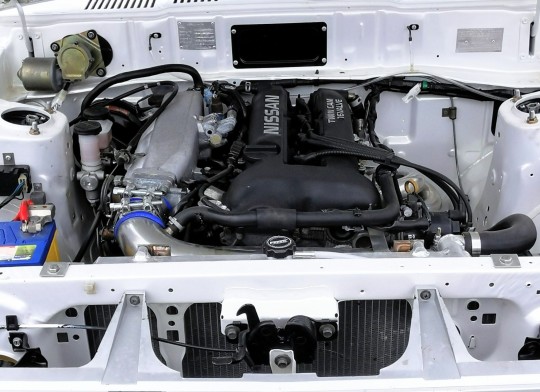
10 notes
·
View notes
Photo
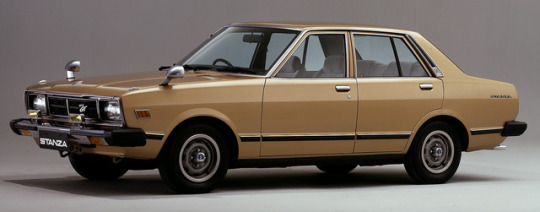

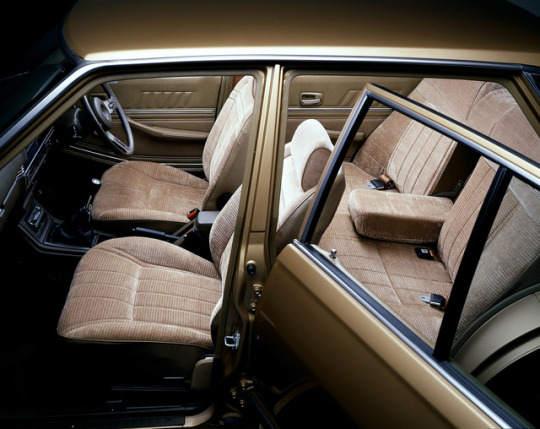
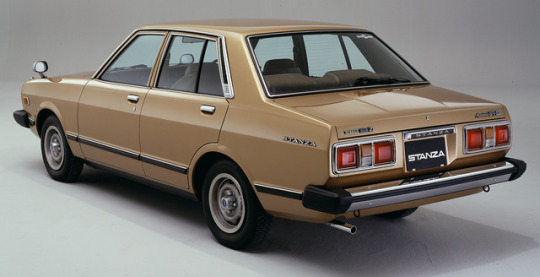
Nissan Stanza T10 series 1800 Maxima GT-E, 1978. The Stanza was related to the Violet and the Auster but sold through the Nissan Satio Store network in Japan. The Stanza name was also used for T10 models assembled in Australia (where the Datsun marque was still in use at the time)
96 notes
·
View notes
Text
The Nissan & IBM Outsourcing Agreement
[ad_1]
Introduction
In the year, prior to the turn of the millennium, Nissan was a company in a serious financial crisis. Debt had approached $22 billion by 1999. The company had been too complacent, and had taken its prior success, for granted [2].
Did Nissan's decision to outsource their IT Infrastructure to IBM in 1999 make good sense? Nissan was a very troubled auto-manufacturer in the late 1990's. Senior executives from the company were known for their conservative outlook on business, and their 'old boy's network,' mentality. Profits were dropping dramatically, eventually forcing the company into the $22 Billion debt that it then faced. There were no signs indicating a change in the market that would encourage profit growth. The vehicle sales needed invigoration.
Mergers were the flavor of the day in the automotive industry during the late 1990's. Nissan executives approached Daimler Chrysler and Ford to discuss a possible merger, but there was no interest from either of the companies [2]. There was only one alternative left, which was to reinvent themselves and reduce unnecessary overheads. This was the defining point that led to the business process outsourcing decision.
This paper seeks to answer the question "Does the cost of implementing an in-house solution outweigh the benefits or does Business Process Outsourcing (BPO) make more sense?" We reviewed the example of the automotive manufacturer, Nissan, when they decided to outsource their entire Information Technology department to IBM in late 1999, to answer our question.
Nissan - A brief history and the events leading up to the BPO decision
I. The Boom years
Nissan was established in Japan in 1933 as a heavy industry manufacturer. After the Second World War they turned their attention to automotive vehicles. In the 1950's, they finally had an impact on the global market with the introduction of the Datsun branded sedans and small pickup trucks. The company eventually opened full-time operations in the USA in September 1960 [6].
The company experienced dramatic growth with the introduction of the 'Z' series sports sedans in the early 1970's, with the 240Z becoming the fastest selling sports car of all time. This success led Nissan to the top of the U.S. vehicle importers market by 1975. Vehicle sales in the USA topped over 250,000 units per annum by 1970 [6]. The company was young, its leaders dynamic and the future looked very bright. They were competing for the U.S. market with the likes of Ford, Chrysler, and General Motors, showing improved quality and production efficiencies over their competitors.
The company was growing at a phenomenal rate, opening new manufacturing plants around the world on a regular basis such as Australia (1976), Spain (1980) and the United Kingdom (1984) [6]. There was no respite to the pace of growth and new business generation coming from the company.
In 1983, the company began the worldwide marketing of vehicles under the Nissan name which was felt to have a stronger quality image and started the six year transition from Datsun to Nissan on vehicles, dealerships, facilities and marketing materials. Sales continued to grow, eventually reaching 830,767 in 1985 [6]. The decade closed out with resounding success for Nissan with their domination of the North American market.
In 1993, the mid-line Stanza sedan was replaced with an all-new Altima and non-competitive Japanese-designed minivan was replaced with a new U.S. created Quest, which was the first minivan with car-like handling. Sales came roaring back in 1994 to near-peak levels of 774,405 [6].
In 1996, sales began to slip once again, fueled by a change in American vehicle tastes. Trucks and SUVs gained market share at the expense of sedans and sports cars [2]. Nissan's position as a manufacturing driven company, which helped them in the '80's and early '90's, then had new problems with the dollar/yen balance which began to hurt their competitiveness against market driven companies.
Unlike their competitors, Toyota and Honda, which were focused on key volume segments, Nissan did not dominate any individual segment and competed in identical segments against Toyota and Honda.
Unfortunately for Nissan in the 1990s, the Japanese "bubble economy" burst, a downturn in Europe coincided, so there was more pressure in the U.S. to perform. Unfortunately U.S. customers didn't have a genuine brand reason to shop Nissan except for the 'best price' deal.
Former Nissan president, Mr. Nakamura, announced a "Back-to-Basics" plan. The key elements of the plan were to reduce inventories, eliminate unrealistic sales targets, and increase dealer profitability. Unfortunately for Nakamura and Nissan, the plan did not work [2].
II. Trouble looms for the auto-manufacturer in 1990's
In the early 1990's, trouble began to brew in the organization. The once revered executives at Nissan were now viewed as arrogant members of the old-boys club and were ignorant to the changing needs of their customers and the overall automotive market, in general.
As the company progressed deeper into debt, it met with more challenges. Nissan's business partners and suppliers were charging a premium for their goods and services. Nissan was obliged to meet its financial commitments and by so doing placed itself further into debt. Finally, the company was in debt to the tune of $22 billion. Even the company's financers were tightening the noose around them. Nissan felt the situation was hopeless.
III. Steps taken to address issues
Nissan executives were looking for a way out, a way to rescue the company from entering into bankruptcy. The first approach was to find a partner. Both the newly established DaimlerChrysler and the Ford Motor company were approached, but both organizations rejected the idea of a merger [2]. Finally, Renault, the French automotive company recovering from a similar predicament, decided to enter into negotiations with the flailing Japanese company. A senior executive at Renault, Carlos Ghosn, was a huge supporter of the merger idea.
After much negotiation, the Japanese Ministry of Economy, Trade and Industry agreed to allow Renault to purchase a substantial stake in Nissan. The Nissan-Renault alliance was born and Ghosn was appointed Chief Operating Officer.
Nissans Executive decisions and major events
I. Creating a global alliance vision:
The following is excerpted from the Nissan/Renault alliance vision:
"The Renault-Nissan Alliance is a unique group of two global companies linked by cross-shareholding. They are united for performance though a coherent strategy, common goals, and principles, results-driven synergies, shared best practices. They respect and reinforce their respective identities and brands."[2]
The Alliance set itself three objectives, with the goal of being amongst the best three automotive groups in the following areas:
1. Quality.
Achieve customer recognition as being a quality and value added product.
2. Technology.
Lead in key technology development and implementation with a focus on excellence in specific areas of the automotive business.
3. Operating Profit.
Consistently generate a high operating profit margin and vigorously pursue growth.
II. Appointing a new leader
Ghosn, given his enthusiasm for the merger, his demonstrated tenacity, and his experience of the automotive industry, was a natural choice for a senior position at Nissan. His initial appointment as Chief Operating Officer (COO) was just a temporary assignment. In 2000, he was named President and in 2001, he was appointed Chief Executive Officer (CEO).
As CEO, Ghosn was very aware that the 'buck' stopped with him. He was the final decision maker. Some important and very serious decisions were made to save the ailing company. Ghosn had to use all of his valuable experience gained from rescuing other organizations, such as Michelin and Renault, to save Nissan.
III. Decision making to save a troubled auto-manufacturer
With Ghosn's arrival in Japan in the spring of 1999, he immediately set about researching Nissan's root problems. The newly appointed COO had a management philosophy that stated "you must always start with a clean sheet of paper because the worst thing you can have is prefabricated solutions... you have to start with a zero base of thinking, cleaning everything out of your mind."[2]
For the first few months, Ghosn flew around Japan, meeting and greeting employees at all levels, absorbing information and formulating a plan. He used this information to plot a picture of Nissan from a global perspective, identifying issues, and problems that had created the dispersed, unprofitable organization.
One of the many issues Ghosn identified was the lack of communication around the organization. Seniors managers around the world were aware of some of the issues that caused the downturn of fortune in the company. They even had solutions to them, but had lacked the necessary authority to implement or communicate the solutions back to Corporate Headquarters.
Finally, the major issues were whittled down to five key issues: [2]
• Lack of clear profit orientation. Nissan was not focused on driving profit, but were rather focused on market share and ended up having to buy their market share at the expense of the declining profits.
• Insufficiently focused on customers and too much focus on competitors. The company was too concerned about the competition introducing a new line which would have dug into the Nissan market share. For example when Volkswagen introduced their new Jetta sedan Nissan saw a significant decline in their Maxima sales.
• Lacked cross-functional, cross-border, and intra-hierarchical lines of work in the company. Nissan seemed to operate as separate islands scattered throughout the globe. There was no centralized purchasing function or in fact any of the other major business activities. The organization was not making maximum use of its global presence or buying power.
• Lack of sense of urgency. The executives in Nissan were complacent in their activities. Things had gone so well for the company in the preceding 60 years that they felt that there was no reason to embrace change.
• No shared vision or common long-term plan. Senior management within Nissan did not have a joint plan for the different brands within the company. Each division did their own thing with little or no thought for the greater good of the company. An example was the Z series that had achieved phenomenal success throughout the 1970's and '80's but was suddenly dropped from production when sales dropped. The obvious thing to have been done was to test the market with a modernized design. Instead Nissan chose to ignore the market and drop the brand.
To address the issues, Ghosn announced the Nissan Revival Plan on October 18, 1999. This seven-point plan was aimed at reducing costs and debt as well as creating and launching new automotive brands to raise sales and market awareness. The goals announced in the plan were far-reaching and encompassed: [2]
• The reduction of operating costs, net debt, global head count, and vehicle assembly plants and manufacturing platforms (the latter in Japan).
• The generation of new product investment through the launch of twenty-two new models.
The cost-cutting plan called for centralization of purchasing, procurement, human resources and information technology. By centralizing these essential functions, the plan aimed to assist the company in achieving its aggressive cost reductions.
Expenditure, particularly in the information technology function, was perceived as being out of control. Ghosn's message to senior level executives was clear, "cut costs in every possible area." If that meant outsourcing non-core activities because somebody else could do it cheaper, then that had to be fully investigated and determined. The management was ruthless in their execution of the plan [2].
Nissan looks at Business Process Outsourcing as a means
I. Will outsourcing non-core activities save money?
There are well-documented records of company's saving money and others of outsourcing horror stories. Success really depended on the situation and the provider.
Most experts agreed, though, that you needed to use BPO in strategic decisions, for example refocused efforts on core competencies and not merely for cost cutting activities [1]. Stephen Withers of ZDNet said in his on-line article that you should only "use BPO for strategic purposes, not to take advantage of a (possibly transient) cost saving." Withers then asked the reader, "Does outsourcing the IT Infrastructure make sense?" To answer that question corporate Chief Information Officer's (CIO's) would need to have completed extensive research and have done a thorough analysis of their business processes.
This is exactly what Nissan's CIO did, or rather what Ghosn told him to do. The company had invested over 80 billion yen (over $US760million) in 1998 on IT services, but their processes were still not providing the management with the infrastructure that would assist in building their competitive edge [5]. The final decision was made to approach various outsourcing service providers for the much needed help.
II. Does outsourcing the IT infrastructure make sense?
If Information Technology (IT) truly was a commodity, like gasoline or electricity, then companies only competed on price, with very small profit margins. In that event, the decision to turn over IT to an outsourcer was as simple as it was a century ago to turn to motor vehicles instead of using the horse and cart. However, while personal computers and the networks they run on may be standardized, the services provided by IT outsourcers vary in many ways. Services such as data analysis, application development, and IT decision-making allowed companies more competitiveness in the market therefore, those elements of IT are far from being viewed as commodities [8].
With regards the decision to outsource, many factors were considered in Nissan's case. Ann Moynihan in her article in the Albany Business review states "Outsourcing can help you: [3]
• Reduce and control operating costs.
• Free staff to focus on core business.
• Gain access to specialized skills and technologies.
• Introduce positive change.
• Gain control over a difficult-to-manage function resulting from uneven workloads, insufficient or unskilled resources."
With Nissan, in 1999, this was exactly what they were looking for. Refocused staff efforts, introduction of positive change and control gained in all critical areas led to the outsourcing decision.
The choice of IBM as Nissan's outsourcing partner was a strategic one. In the late 1990's there were not many outsourcing companies that had the breadth or the global reach that IBM had. Competitors such as EDS and CSC were not considered because they were only outsourcers and could not offer the hardware and software technology that Nissan required to update their infrastructure [5]. If either one of those competitors were selected over IBM as a partner Nissan would still have faced the same infrastructure issues. IBM was the only logical partner.
Did the relationship work between Nissan & IBM?
I. A further look at the relationship between IBM and Nissan
In a joint IBM and Nissan press release published in Tokyo on June 19, 2000, the two companies announced that they were "Extending their global partnership for information system (IS) operations which Nissan Motor Co., Ltd. and IBM agreed in October 1999, Nissan and IBM today jointly announced that Nissan will outsource its IS operations in Japan, to IBM Japan.
The service includes Nissan's regular maintenance and operational activities as well as part of its application development, but excludes the planning and design of new systems. The two companies will start operations from October 1. [7]
In North America, Nissan has outsourced these same operations to IBM Corp. since October 1999. This latest agreement in Japan is expected to further accelerate the standardization, integration and centralization of Nissan's IS on a global level."
Ghosn further noted, "The Nissan Revival Plan cannot be accomplished without effective information systems. Following upon the recent agreement with Japan Telecom, this latest partnership with IBM puts in place the global infrastructure which is key to support Nissan's long term profitable growth." [4]
II. Hypothetical view of the Return-on-Investment model used
Before they could calculate their Return on Investment (ROI), Nissan first had to look at the Total Cost of Ownership model proposed by IBM. Total Cost of Ownership (TCO) is a type of calculation designed to help consumers and enterprise managers assess both direct and indirect costs and benefits related to the purchase of any IT component. The intention was to arrive at a final figure that will reflect the effective cost of purchase, overall [8].
The TCO model used, had to calculate the costs that were required, beyond the fees of outsourcing. The organization had to evaluate specific criteria's that could have added expense to the outsourcing project. They also had to calculate the ongoing expenses throughout the lifetime of the contract [8].
Then, after calculating the payback period, Nissan were in a position to calculate their ROI. Once the numbers were crunched, a thorough financial and risk analysis was conducted. The ROI measured the profit or cost savings realized. It was calculated by estimating, for a 3-year period, the investment was made and the resulting profit created through that investment.
The results were conclusive. Nissan and IBM entered into their agreement and operations scheduled to commence on October 1, 1999.
Conclusion
I. Did Nissan's BPO reach its stated objective?
Nissan's stated objective for the outsourcing of the IT infrastructure was to control expenditure, improve efficiencies, and update the infrastructure. By outsourcing to IBM, Nissan achieved all of its goals.
In controlling expenditure, outsourcing gave companies the opportunity to have a predictable monthly budget for expenditure. That amount may or may not have been lower than current expenditures but the component that was crucial to a large organization such as Nissan was that the amount is predictable. There was no variable component to the pricing. The only time the pricing may have fluctuated was when additional services, which were out of scope of the contract, were required.
In Nissan's case, that was never a requirement. The company was in the first stage of a major, global, restructuring project and there were no new initiatives taking place.
The second objective in the BPO was to improve efficiencies. IBM is the world's largest information technology company with revenues close to $100 billion [9]. When companies outsource their operations to IBM they are gaining best-of-breed technologies, excellent consultants and some of the best systems architects money can buy.
The way that any global outsourcer makes its money is by achieving economies of scale. The only way to achieve these economies of scale is to ensure that they deploy the best hardware, software, and infrastructure possible and make that equipment work to maximum efficiencies. By taking full advantage of this best-of-breed technology, Nissan met its second and third stated objectives.
II. What if the IT Infrastructure had been retained in-house?
If Nissan had decided to retain its IT infrastructure in-house and attempted to implement an updated and modernized system, it would have lead to a significant increase in their expenditure. Ghosn's prime objective, when he took over the company in 1999, was to reduce expenditure by 700 billion Yen [2]. He was not interested in spending any additional money to modernize existing equipment.
To support the intended improvement in competitiveness, Nissan had to ensure that their infrastructure supported the additional workload. There was no way they could do the intended improvement in efficiencies without external support. Nissan did not have the expertise and the additional work force to handle the required upgrades and the reengineering of business processes.
III. Final assessment and summation of the relationship
Robert Greenberg, Nissan's CIO of North America was on record as saying in 2006 that, "We were happy with the services from IBM but the world had changed." This comment sums up the relationship as it stands now, almost 8 years later [5]. When Nissan announced its Revival Plan, in 1999, the company had very clear objectives; cut costs, and return to profitability.
Nissan was looking for help in 1999 and IBM fulfilled this role for their IT Infrastructure. Greenberg also stated in his Q&A that "One of the things that also took place with the original outsourcing to IBM was we probably outsourced too much." [5]
Greenberg was not working for Nissan when the original outsourcing decision was made in 1999; he only joined the company in 2005. He is on record though as saying that he thought that they should have either retained some of the infrastructure in-house or perhaps have multi-sourced, thereby ensuring that they had the best possible solution and price.
In 2006, when the contract came up for renewal, the CIO decided to put everything out to bid and compare what the other vendors were offering with what IBM had provided for so many years. The decision to look at new vendors was actually excellent timing for the company as Nissan had decided to relocate their North American corporate headquarters from Los Angeles, CA to Nashville, TN and any transition could be timed to coincide with the move.
Ultimately, what Greenberg opted to do was to accept IBM's proposal to "manage desktop systems, network services, help desks, dealer systems, and other key infrastructure elements for Nissan North America." He then outsourced the application and maintenance to an Indian firm, Satyam and brought the remainder of the services back in-house [5].
When asked about the decision to bring IT back in-house, Greenberg said, "By bringing it in-house you increase the alignment. It's a matter of building the knowledge internally [that] can be used to help drive the business activity, which is much harder when a business analyst function is sitting within a third party." [5]
IV. Does the cost of implementing an in-house solution outweigh the benefits or does BPO make more sense?
As Stephen Withers stated in his article, BPO decisions should not be made for cost-cutting exercises but rather for strategic directions [1]. In other words, companies should not view BPO as a cost saving tool. Outsourcing the IT operation makes sense when an organization is looking to improve efficiencies and business processes or when they cannot attract, or retain, the human capital who have the expertise and ability to modernize or improve the infrastructure.
Nissan's CIO Robert Greenberg thought that he would actually save money by bringing some of the work back in-house because he was "not paying margin on the individual [headcount]." [5]
Some of the individual lessons that Nissan's Greenberg has learnt from the outsourcing agreement with IBM has been that certain services developed by the IT organization can indeed be outsourced or developed externally. However, he felt strongly about retaining in-house IT skills in such value generation areas as business analysts who have a strong understanding of the business, sometimes even better than the business customer does. Insourcing these skills could result in ideas and dialog with the business, with the end result being a service delivery or product development than can then be outsourced.
In summary, the answer to the question, 'Does the cost of implementing an in-house solution outweigh the benefits or does Business Process Outsourcing make more sense?' is that it depends. It depends on the available skills; it depends on the overall objectives (cost saving vs. process improvement) and it depends on the organization. For the most part the majority of major corporations world wide that have been through an outsourcing contract or are in an outsourcing contract will agree that there are substantial benefits to implementing an outsourcing contract and there substantial benefits in retaining those skills in-house. What each organization needs to do is ascertain which of those benefits outweigh the other and base their decision on that analysis.
Works Cited
[1] Withers, Stephen. "BPO: Save money or fix your processes?" ZDNet.com
[http://www.zdnet.com.au/insight/business/soa/BPO-Save-money-or-fix-your-processes-/0],139023749,139156391-10,00.htm 17 August 2004. Downloaded October 22, 2007
[2] Magee, David. Turn Around: How Carlos Ghosn rescued Nissan. New York: HarperCollins Publishers Inc, 2003.
[3] Moynihan, Ann. "Outsourcing enables owner to focus on core business." http://www.bizjournals.com/albany/stories/2002/10/14/focus10.html October 11, 2002. Downloaded October 22, 2007
[4] IBM Press room press releases. IBM.com "Extending Their Global Partnership, Nissan, and IBM Announce IS Outsourcing for Japan" http://www-03.ibm.com/press/us/en/pressrelease/1670.wss June 19, 2000. Downloaded October 19, 2007
[5] Thibodeau, Patrick. "Q&A: Nissan CIO reshapes automaker's IT"
[http://www.computerworld.com/action/article.do?command=viewArticleBasic&articleId=110024&intsrc=industry_list] March 29, 2006. Downloaded October 23, 2007
[7] McDougall, Paul. "IBM, Nissan Outsourcing Deal Spans The Globe" http://www.informationweek.com/outsourcing/showArticle.jhtml?articleID=181502685 March 10, 2006 10:00 AM. Downloaded November 02, 2007
[8] Ikin, Paul. IBM Representative on Nissan Global team. 1998 to 2001.
[ad_2]
Source by Paul Ikin
0 notes
Text

25 notes
·
View notes